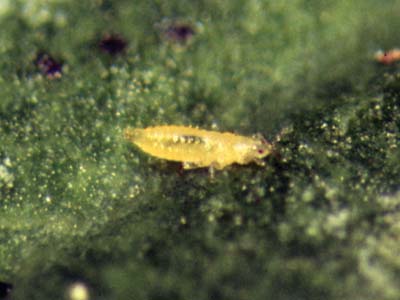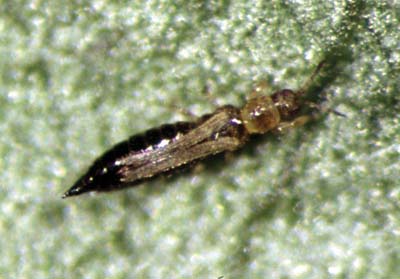To save the Web-optimized images shown below to your hard drive:
|
Click to access Display and Print quality images. |
|
Click to access Display and Print quality images. |
Copyright © 2005 University of Florida
Vegetable crops that are commonly infested by the tobacco thrips include bean, beet, cantaloupe, carrot, corn, cowpea, cucumber, onion, pea, pepper, potato, tomato, and watermelon. Because tobacco thrips is capable of vectoring viruses such as tomato spotted wilt virus, it is known principally as a pest of tomato and peanut. Seedlings can be damaged by the tobacco thrips and damaged leaves tend to curl upward and have a silvery crinkled appearance. Buds may also be destroyed. Populations in the field may be determined by sampling blossoms and it is recommended that 16 to 18 flowers be collected from each sample site. Management is normally accomplished by the application of insecticides to the blossoms and foliage. Insecticides should be rotated in order to reduce the occurrence of resistance in the field.
Images
To save the Web-optimized images shown below to your hard drive:

Tobacco thrips, Frankliniella fusca, larva.
(Photographer: L. Buss, University of Florida)
Click to access Display and Print quality images.

Tobacco thrips, Frankliniella fusca, macropterous adult
female.
(Photographer: L. Buss, University of Florida)
Click to access Display and Print quality images.
Copyright © 2005 University of Florida